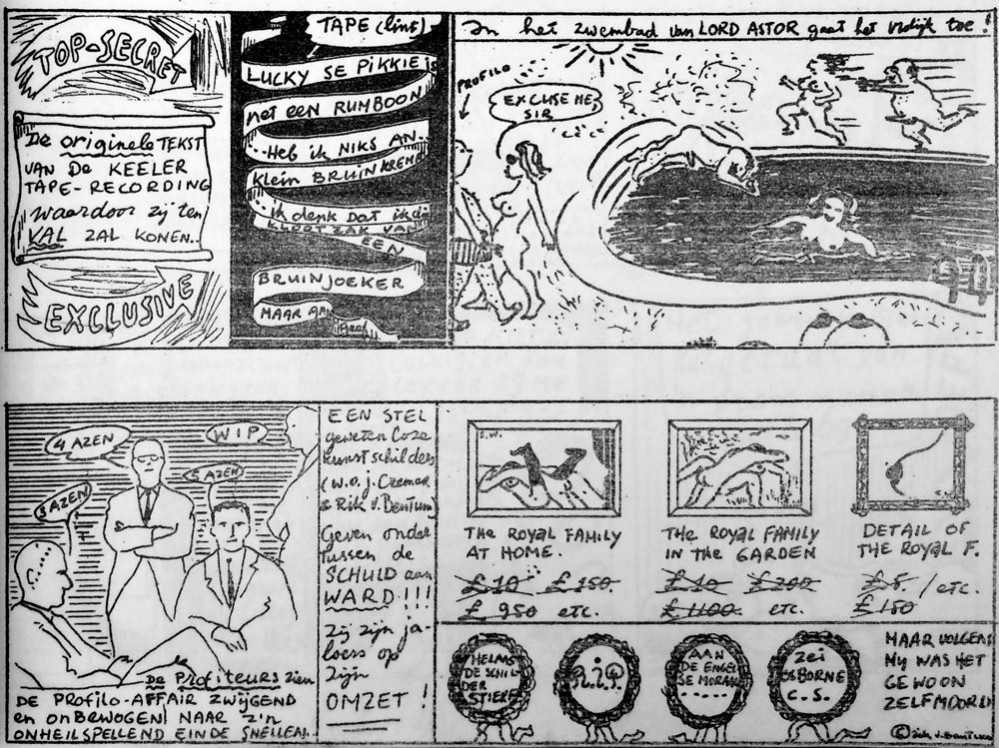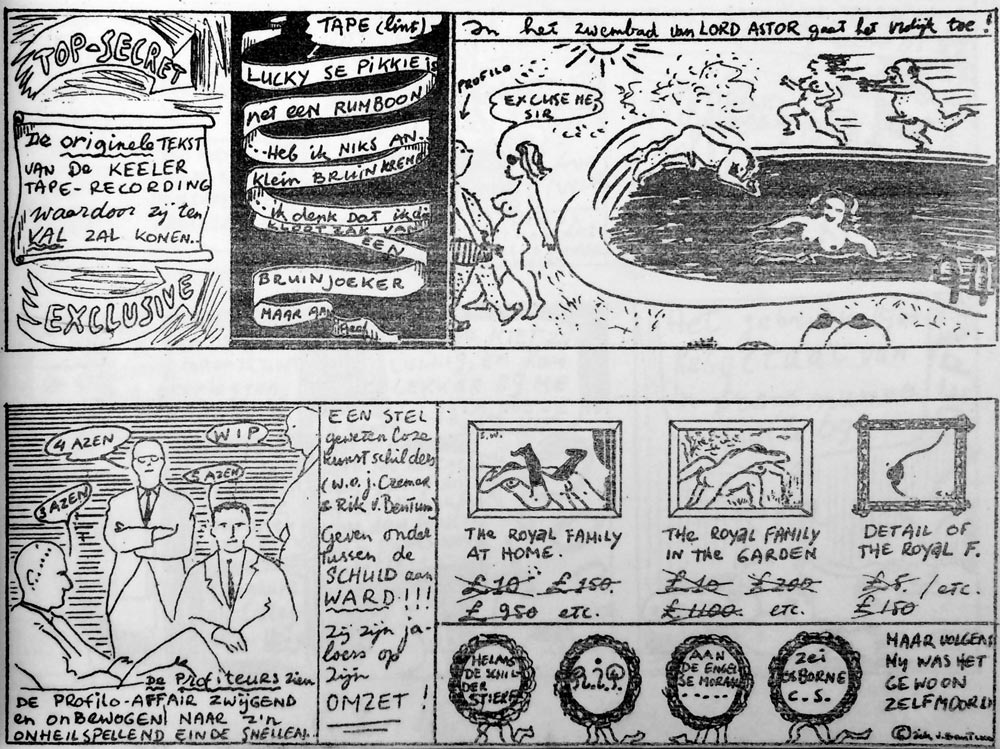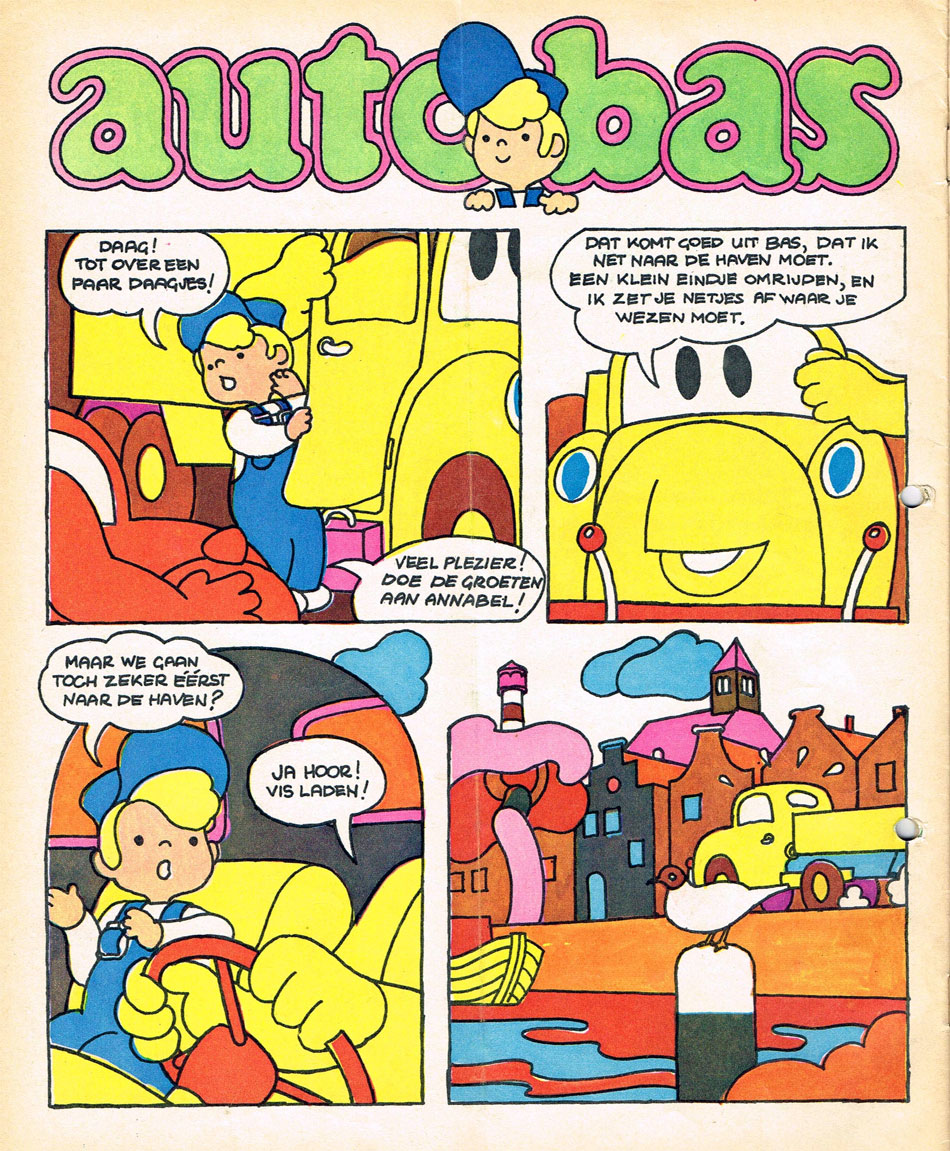'New Comic Strip Scandal 000' (source: kb.nl).
Rik van Bentum was a Dutch sculptor, graphic artist, illustrator and painter. In 1963, he collaborated with the cult novelist Jan Cremer on the pornographic comic strip 'New Comic Strip Scandal 2000' (1963), based on the Profumo sex scandal. While very obscure, crudely drawn and only published in 1965, after Cremer had become famous, this particular work could be considered the first Dutch underground comic .
Artistic career
Hendrikus Johannes van Bentum was born in 1936 in Amsterdam. As a teenager, he was so interested in art that he deliberately skipped school to go to the Stedelijk Museum of Amsterdam. In 1953, he became a painter of advertisements, combining his job with studying art at the Art Academy of Arnhem. In addition, he earned extra cash as a deejay and seasonal worker. Among his fellow students were future well-known Dutch artists like Mark Brusse, Klaas Gubbels and Jan Cremer. Together with Ted Felen, they established their own art movement "Nada", which gained some press notice for their self-organized exhibitions.
In the 1960s, Van Bentum's paintings and sculptures were exhibited in New York City. He underwent influence from the pop art movement and started using more advertising symbols in his work. After 1969, Van Bentum returned to Amsterdam where he became a designer of theatrical sets and literary festivities in collaboration with the Rietveld Academy. His name was one of the more unlikely ones to appear among the co-workers of the weekly magazine based on the puppet TV show 'De Fabeltjeskrant' (1969-1970). It is unknown what Van Bentum's contributions were, perhaps the pop art style adaptation of Mies Bouhuys' children's book series 'Auto-bas'. Between 1968 and 1975, Rik van Bentum was married to actress Kitty Courbois. The artist passed away in 1994.
Comics
In 1963, Van Bentum collaborated with the future shock novelist Jan Cremer on a pornographic comic strip, 'New Comic Strip Scandal 000'. The comic was inspired by the then-current sex scandal revolving around British Minister of Defense John Profumo and call girl Christine Keeler. As Keeler counted a Russian ambassador among her clients, the intrigue thickened, since the suspicion rose that she might have been a Soviet spy. The comic strip is set in London. In the first panel a nigh unrecognizable Big Ben is drawn. A woman named "Bloody Mary" takes a shower when someone wants to draw her in the nude. As the phone rings, the nude woman assumes it's "John" (Profumo) and wants to answer the call. Later in the story, the trial against Profumo and Keeler is depicted, including the "original tapes of their conversations" and snapshots of the British Royal Family having sex. Overall, the story is filled with sex and violence, though so crudely written and drawn that it is somewhat chaotic to follow.
Cremer and Van Bentum alternated on drawing the comic's pages. They aimed at a very limited print-run of 50 copies, but Cremer later admitted that they made only 4 or 5. By lack of interest, the comic strip wasn't officially published until after Cremer became famous. In March-April 1965, samples of the strip appeared in an issue of the literary magazine Ratio, despite the fact that by then the Profumo affair was already old news. Interestingly enough, the magazine printed only five strips drawn by Cremer ("the least unpublishable ones", as the editorial stated). Van Bentum's involvement wasn't even mentioned.
First Dutch underground comic?
Today 'New Comic Strip Scandal' survives as a curious celebrity comic, comparable to similar amateur works by Dutch media figures like Remco Campert, Herman Brood, IJf Blokker, Toon Hermans and Wim de Bie. Still, it also holds historical significance. Its political, sexual and gruesomely violent content broke new ground in Dutch comics. Cremer and Van Bentum wanted to provoke readers and succeeded, given that it took two years before this controversial comic found publication. And even then, it only appeared in a niche magazine, not in a mainstream publication. All these elements combined make it the strongest candidate for the title "first Dutch underground comic". Yet in terms of actual impact, Robert Olaf Stoop's 'Roza's Lotgevallen' (1966) was far more significant. Stoop had his own publishing company, Real Free Press, to distribute U.S. and Dutch-language underground comix, helping to popularize the genre in the Netherlands. It is therefore safe to say that Stoop is the real godfather of Dutch underground comix, while Cremer and Van Bentum's comic strip is perhaps even more underground by being more obscure.
'Auto-bas' comic feature from De Fabeltjeskrant #11, 1970. Could this be Rik van Bentum's work for the magazine? His name appears in the colophon credits, but his specific contributions remain unknown. Other comic artists working for De Fabeltjeskrant magazine were Lex Overeijnder and Dick Vlottes.
More about the comic strip on the site of the Royal Dutch Library




